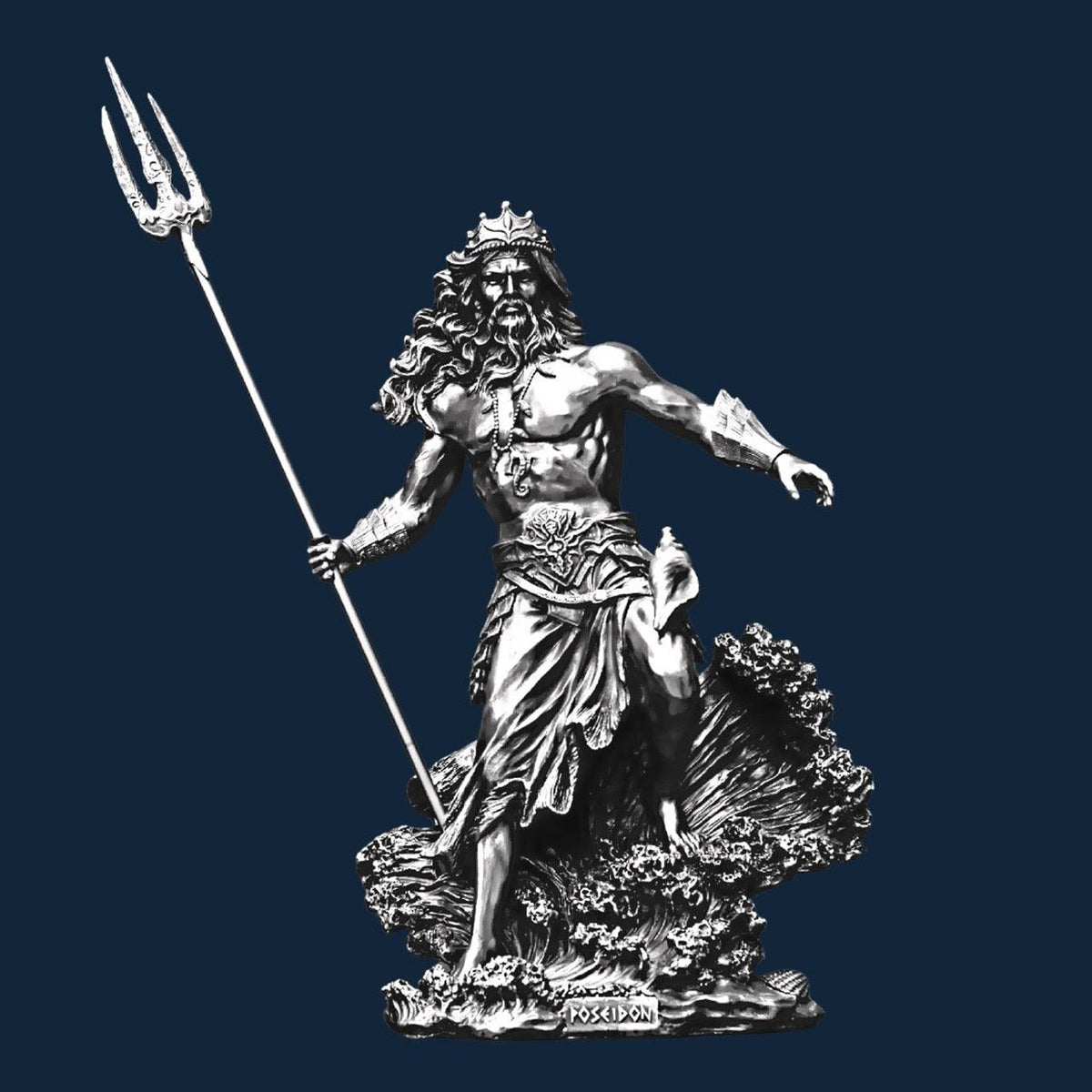Poseidon: The God of the Sea, Mythology and Myths
Jun 26, 22

Poseidon: The God of the Sea, Mythology and Myths
Poseidon was the Greek god of the sea, as well as of earthquakes. The word "Poseidon" comes from the Greek words "posis" and "-eide," which mean “the wise one” or “the one who sees all.”
Poseidon was also known as OCEANUS, the Titan god of fresh water and rivers because he was thought to be their source. As a result, in some traditions, he was considered to be the brother of Zeus and Hades rather than just their uncle.
Poseidon's wife was also known as Amphitrite, but it is unclear whether she was originally a separate goddess or simply a title that meant his consort.
Who was Poseidon?
Poseidon was the Greek god of the sea and earthquakes. He was one of the three sons of Cronus, the ruling god of the Golden Age of Man. Poseidon's brothers were Zeus and Hades, rulers of the sky and underworld, respectively.
In some tellings, he was the husband of Amphitrite, but she is not mentioned in other myths. In most tales, he was the lover of many goddesses, including Demeter, Hera, and Aphrodite, who was known as the goddess of love and beauty.
Poseidon was also the father of a number of gods and heroes, including the sea-nymph Amphitrite, the giant Atlas, and the heroes Myles, Helius, Cycnus, and (in some tellings) Odysseus.
Where and when did Poseidon live?
Poseidon is often described as a wise and just ruler of the oceans and seas, but this is not the only description of him. The Homeric Hymns describe him as a merman with a green fish’s tail who is foul-mouthed, selfish, and greedy. In the myths, he is often depicted as living in a palace beneath the sea.
This palace was said to be guarded by giant sea monsters, including the giant sea urchin. It is unclear when or where Poseidon lived, but he can be seen as a representative of the Bronze Age, as well as the Golden Age of Man.
Poseidon's symbols
As with many other Greek gods, there are many symbols associated with Poseidon. The most common symbol of Poseidon is a trident, which he is often seen holding.
This may have been his original symbol, or it may have come from the fact that he was the ruler of the sea, which is the source of three-quarters of the world’s water.
Other symbols associated with Poseidon were the bull, the horse, and the dolphin. The dolphin was a common companion of Poseidon, and it was believed that dolphins were his heralds.
Poseidon's appearance
There is not a great deal of description of Poseidon’s appearance, although he is often described as having a beard, much like his brother Zeus.
He is often portrayed with blue or green skin, which is presumably related to his connection with the sea. Like his brothers, Poseidon is often depicted wearing a royal crown.
Poseidon's powers and abilities
Poseidon’s main power was over the sea, although he was also associated with earthquakes and horses. Like his brothers, Poseidon was a shape-shifter, who often took an animal form.
He was known to be a fierce warrior who led the charge in many battles, although he was often defeated by his brother Zeus, who is often described as the strongest of the gods.
How did Poseidon feel about humans?
Poseidon is often represented as a just and generous ruler, and there is little evidence to suggest that he was anything but kind to humans. In fact, he was known for intervening on humankind’s behalf, often punishing the arrogance and cruelty of other gods.
Poseidon’s main conflict with humankind was in his battle with the city of Corinth, which he punished by flooding it each year. This was due to a dispute between the ruler of Corinth, King Sisyphus, and the god of Death, Thanatos.
Conclusion
Poseidon, who was the god of the sea and earthquakes, was one of the three sons of Cronus, the ruling god of the Golden Age of Man. In many tellings, Poseidon was the husband of Amphitrite, who was known as the goddess of the sea.
He was also the father of many other deities, including the sea-nymph Amphitrite and the giant Atlas. Poseidon is often described as a wise and just ruler of the oceans and seas, but he is also sometimes depicted as a merman with a green fish’s tail who can be foul-mouthed, selfish, and greedy.
Poseidon is often depicted as having blue or green skin, with a beard, and as wearing a royal crown. Poseidon is often represented as a just and generous ruler, and there is little evidence to suggest that he was anything but kind to humans.
In fact, he was known for intervening on humankind’s behalf, often punishing the arrogance and cruelty of other gods.





